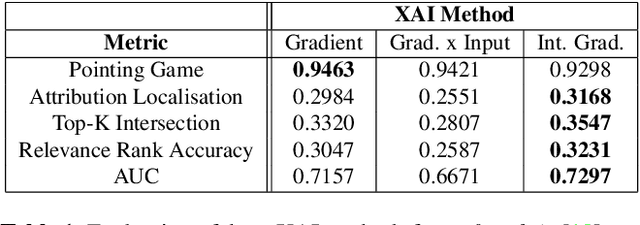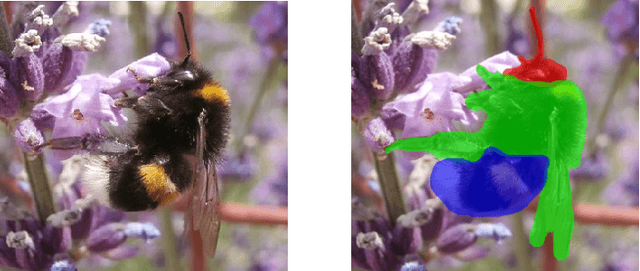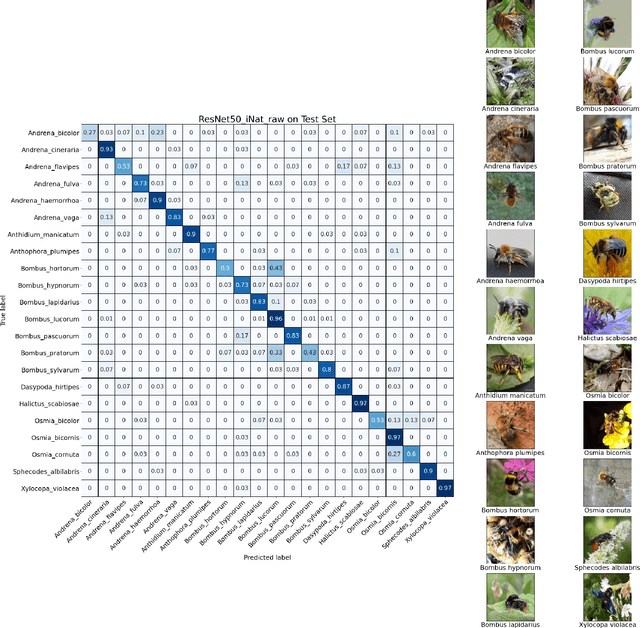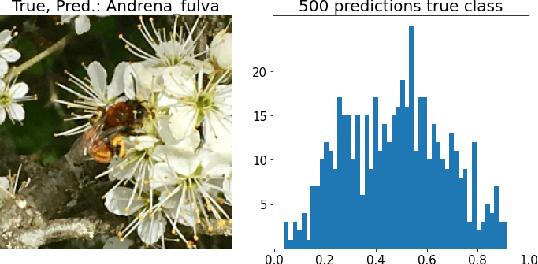Teodor Chiaburu
Evaluating Time Series Models for Urban Wastewater Management: Predictive Performance, Model Complexity and Resilience
Apr 24, 2025Abstract:Climate change increases the frequency of extreme rainfall, placing a significant strain on urban infrastructures, especially Combined Sewer Systems (CSS). Overflows from overburdened CSS release untreated wastewater into surface waters, posing environmental and public health risks. Although traditional physics-based models are effective, they are costly to maintain and difficult to adapt to evolving system dynamics. Machine Learning (ML) approaches offer cost-efficient alternatives with greater adaptability. To systematically assess the potential of ML for modeling urban infrastructure systems, we propose a protocol for evaluating Neural Network architectures for CSS time series forecasting with respect to predictive performance, model complexity, and robustness to perturbations. In addition, we assess model performance on peak events and critical fluctuations, as these are the key regimes for urban wastewater management. To investigate the feasibility of lightweight models suitable for IoT deployment, we compare global models, which have access to all information, with local models, which rely solely on nearby sensor readings. Additionally, to explore the security risks posed by network outages or adversarial attacks on urban infrastructure, we introduce error models that assess the resilience of models. Our results demonstrate that while global models achieve higher predictive performance, local models provide sufficient resilience in decentralized scenarios, ensuring robust modeling of urban infrastructure. Furthermore, models with longer native forecast horizons exhibit greater robustness to data perturbations. These findings contribute to the development of interpretable and reliable ML solutions for sustainable urban wastewater management. The implementation is available in our GitHub repository.
Data-driven Modeling of Combined Sewer Systems for Urban Sustainability: An Empirical Evaluation
Aug 21, 2024Abstract:Climate change poses complex challenges, with extreme weather events becoming increasingly frequent and difficult to model. Examples include the dynamics of Combined Sewer Systems (CSS). Overburdened CSS during heavy rainfall will overflow untreated wastewater into surface water bodies. Classical approaches to modeling the impact of extreme rainfall events rely on physical simulations, which are particularly challenging to create for large urban infrastructures. Deep Learning (DL) models offer a cost-effective alternative for modeling the complex dynamics of sewer systems. In this study, we present a comprehensive empirical evaluation of several state-of-the-art DL time series models for predicting sewer system dynamics in a large urban infrastructure, utilizing three years of measurement data. We especially investigate the potential of DL models to maintain predictive precision during network outages by comparing global models, which have access to all variables within the sewer system, and local models, which are limited to data from a restricted set of local sensors. Our findings demonstrate that DL models can accurately predict the dynamics of sewer system load, even under network outage conditions. These results suggest that DL models can effectively aid in balancing the load redistribution in CSS, thereby enhancing the sustainability and resilience of urban infrastructures.
Multisensor Data Fusion for Automatized Insect Monitoring (KInsecta)
Apr 29, 2024Abstract:Insect populations are declining globally, making systematic monitoring essential for conservation. Most classical methods involve death traps and counter insect conservation. This paper presents a multisensor approach that uses AI-based data fusion for insect classification. The system is designed as low-cost setup and consists of a camera module and an optical wing beat sensor as well as environmental sensors to measure temperature, irradiance or daytime as prior information. The system has been tested in the laboratory and in the field. First tests on a small very unbalanced data set with 7 species show promising results for species classification. The multisensor system will support biodiversity and agriculture studies.
Low Cost Machine Vision for Insect Classification
Apr 26, 2024Abstract:Preserving the number and diversity of insects is one of our society's most important goals in the area of environmental sustainability. A prerequisite for this is a systematic and up-scaled monitoring in order to detect correlations and identify countermeasures. Therefore, automatized monitoring using live traps is important, but so far there is no system that provides image data of sufficient detailed information for entomological classification. In this work, we present an imaging method as part of a multisensor system developed as a low-cost, scalable, open-source system that is adaptable to classical trap types. The image quality meets the requirements needed for classification in the taxonomic tree. Therefore, illumination and resolution have been optimized and motion artefacts have been suppressed. The system is evaluated exemplarily on a dataset consisting of 16 insect species of the same as well as different genus, family and order. We demonstrate that standard CNN-architectures like ResNet50 (pretrained on iNaturalist data) or MobileNet perform very well for the prediction task after re-training. Smaller custom made CNNs also lead to promising results. Classification accuracy of $>96\%$ has been achieved. Moreover, it was proved that image cropping of insects is necessary for classification of species with high inter-class similarity.
CoProNN: Concept-based Prototypical Nearest Neighbors for Explaining Vision Models
Apr 23, 2024



Abstract:Mounting evidence in explainability for artificial intelligence (XAI) research suggests that good explanations should be tailored to individual tasks and should relate to concepts relevant to the task. However, building task specific explanations is time consuming and requires domain expertise which can be difficult to integrate into generic XAI methods. A promising approach towards designing useful task specific explanations with domain experts is based on compositionality of semantic concepts. Here, we present a novel approach that enables domain experts to quickly create concept-based explanations for computer vision tasks intuitively via natural language. Leveraging recent progress in deep generative methods we propose to generate visual concept-based prototypes via text-to-image methods. These prototypes are then used to explain predictions of computer vision models via a simple k-Nearest-Neighbors routine. The modular design of CoProNN is simple to implement, it is straightforward to adapt to novel tasks and allows for replacing the classification and text-to-image models as more powerful models are released. The approach can be evaluated offline against the ground-truth of predefined prototypes that can be easily communicated also to domain experts as they are based on visual concepts. We show that our strategy competes very well with other concept-based XAI approaches on coarse grained image classification tasks and may even outperform those methods on more demanding fine grained tasks. We demonstrate the effectiveness of our method for human-machine collaboration settings in qualitative and quantitative user studies. All code and experimental data can be found in our GitHub $\href{https://github.com/TeodorChiaburu/beexplainable}{repository}$.
Interpretable Time Series Models for Wastewater Modeling in Combined Sewer Overflows
Jan 04, 2024Abstract:Climate change poses increasingly complex challenges to our society. Extreme weather events such as floods, wild fires or droughts are becoming more frequent, spontaneous and difficult to foresee or counteract. In this work we specifically address the problem of sewage water polluting surface water bodies after spilling over from rain tanks as a consequence of heavy rain events. We investigate to what extent state-of-the-art interpretable time series models can help predict such critical water level points, so that the excess can promptly be redistributed across the sewage network. Our results indicate that modern time series models can contribute to better waste water management and prevention of environmental pollution from sewer systems. All the code and experiments can be found in our repository: https://github.com/TeodorChiaburu/RIWWER_TimeSeries.
Towards ML Methods for Biodiversity: A Novel Wild Bee Dataset and Evaluations of XAI Methods for ML-Assisted Rare Species Annotations
Jun 15, 2022



Abstract:Insects are a crucial part of our ecosystem. Sadly, in the past few decades, their numbers have worryingly decreased. In an attempt to gain a better understanding of this process and monitor the insects populations, Deep Learning may offer viable solutions. However, given the breadth of their taxonomy and the typical hurdles of fine grained analysis, such as high intraclass variability compared to low interclass variability, insect classification remains a challenging task. There are few benchmark datasets, which impedes rapid development of better AI models. The annotation of rare species training data, however, requires expert knowledge. Explainable Artificial Intelligence (XAI) could assist biologists in these annotation tasks, but choosing the optimal XAI method is difficult. Our contribution to these research challenges is threefold: 1) a dataset of thoroughly annotated images of wild bees sampled from the iNaturalist database, 2) a ResNet model trained on the wild bee dataset achieving classification scores comparable to similar state-of-the-art models trained on other fine-grained datasets and 3) an investigation of XAI methods to support biologists in annotation tasks.
 Add to Chrome
Add to Chrome Add to Firefox
Add to Firefox Add to Edge
Add to Edge